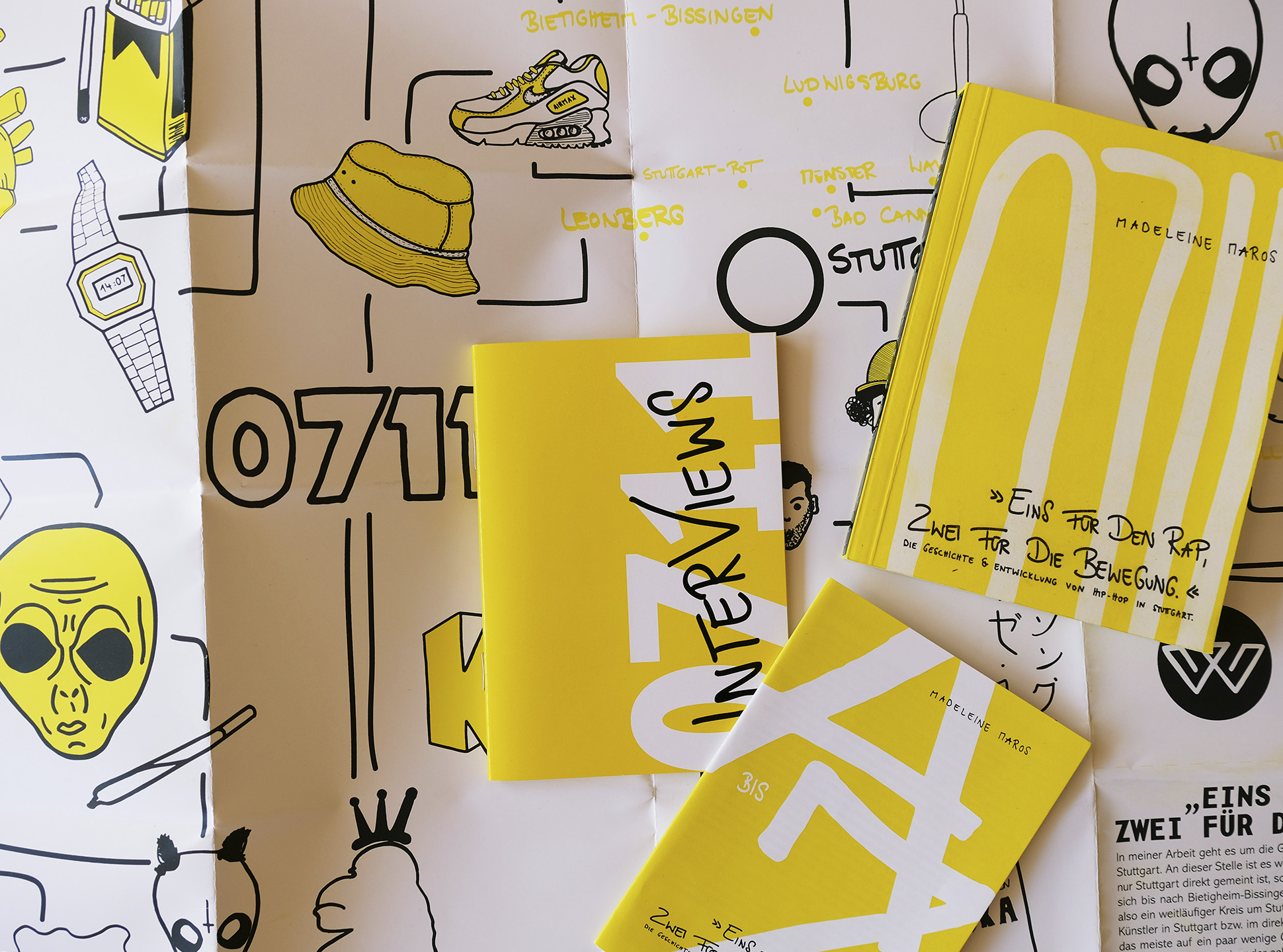
One for rap, two for movement – The history and development of HipHop in Stuttgart
2018 Bachelor Thesis
Student: Madeleine Maros
Supervisor: Prof. Michaela Köhler and Judith Peters
published on: www.designmadeingermany.de und www.page-online.de
Since I can think I hear HipHop, preferably Deutschrap. I can’t explain this to myself because in my family environment there is nobody who likes music in this direction. Nevertheless, I was gripped by it from the beginning and it still is today. Early on I started to get involved with the music and the artists behind it. I read articles, listened and watched interviews, visited concerts, events and festivals in the hip hop area, watched battles and tried to collect as much information as possible about everything and everyone.
A few months ago, when it came to finding a topic for my bachelor’s thesis, it was immediately clear to me that my work should revolve around rap.
The goal was to create a compendium about HipHop in Stuttgart, because Stuttgart is my hometown and I feel very connected to the local artists. Furthermore, there is no work that has written exclusively about the history of HipHop in Stuttgart, although Stuttgart plays a very important role in relation to HipHop Germany (to this day).
In order to be able to use as many direct sources as possible, I conducted a total of 14 interviews with artists, organizers, journalists, DJs and other participants from the scene. I transcribed these interviews and then wrote the text for the book – the heart of the work. The structure was chronological, which became more difficult with the increasing popularity of the genre. That’s why many modern artists overlap. In addition to the artists, there are also some producers, labels, locations and events from the Stuttgart area that are part of the HipHop context to be found in the book. The HipHop culture is maintained and lovingly cultivated in Stuttgart to this day.
All illustrations and a part of the typography were made by me. The illustrations are related to the artists or the texts of the artists. The thick black outlines are common for graffiti and were used for the work. As CI colours I chose yellow and black – the colours of the Stuttgart logo.
For each chapter or artist there is an excerpt from one of his songs. These excerpts are handwritten, as are the headings of the individual chapters. The handwriting is based on graffiti or tagging, which is one of five parts of the HipHop culture. Special features of the typography are the pagination, which is rotated by 90°, on the left and right margin, and the underlined passages, which indicate that these are interview excerpts or quotations.
The book was printed using the Riso printing process. The look achieved by this printing process matches the culture, which is often somewhat “unclean”. The DIY character, which plays a very important role in HipHop, is taken up again and emphasized. It also gives the book a very pleasant feel and each piece is unique.
In addition to the book, I also designed the accompanying material. This consists of a 60-page brochure in which most of the interviews are printed. Unfortunately it was not possible to include all statements and answers in the book, so the answers were listed separately. Many beautiful opinions and sentences can be read here. In addition there is a Leporello in which various terms from the range of the HipHop are briefly explained. The last one was a poster, which should visualize the connections a little bit. The connections between artists, labels and institutions are complicated and confusing, which is why the poster explains the connections with simple illustrations and lines. After the reader has dealt with the book and the accompanying material, however, everything should be clear.
The bundle is held together by a banderole with an embossed and personalised label. Such an embossed label is also on the spine of the book. This gives each book a personal touch.
Madeleine Maros